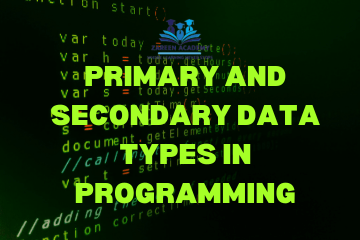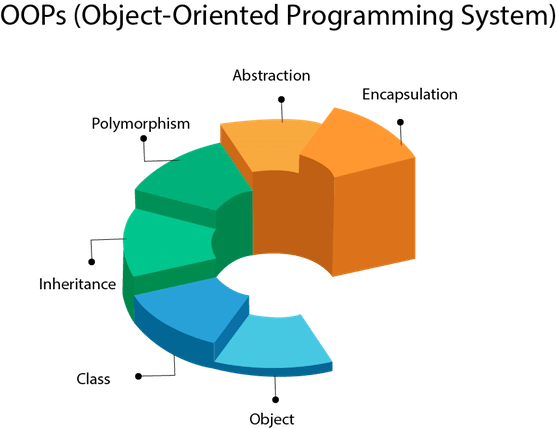SQL:
Structured Query Language (SQL) is a widely used programming language designed for managing relational databases. Since its inception in the 1970s, SQL has become an industry standard, powering a vast array of database management systems (DBMS). In this article, we will delve into the world of SQL, exploring its core concepts, syntax, and its myriad of uses across different domains. Whether you are a seasoned developer, a data analyst, or simply someone curious about the inner workings of databases, this article aims to demystify SQL and highlight its significance in today’s data-driven world.
Table of Contents:
- Overview of SQL a. Definition and History b. Relational Databases c. ACID Properties
- SQL Syntax and Basics a. Data Definition Language (DDL) b. Data Manipulation Language (DML) c. Data Control Language (DCL)
- Core Concepts in SQL a. Tables and Relationships b. Data Types c. Primary Keys and Foreign Keys
- Common SQL Statements a. SELECT b. INSERT c. UPDATE d. DELETE e. JOIN f. GROUP BY g. ORDER BY h. WHERE
- Advanced SQL Concepts a. Subqueries b. Views c. Indexes d. Transactions e. Stored Procedures
- Applications of SQL a. Data Analysis and Reporting b. Web Development c. Enterprise Resource Planning (ERP) Systems d. Customer Relationship Management (CRM) e. Healthcare and Scientific Research
- Challenges and Best Practices a. Performance Optimization b. Security Considerations c. Database Normalization d. Backup and Recovery
- Conclusion
- Overview of SQL:
a. Definition and History: SQL, which stands for Structured Query Language, is a domain-specific language used for managing relational databases. It was developed in the early 1970s by Donald D. Chamberlin and Raymond F. Boyce at IBM. Initially known as SEQUEL (Structured English Query Language), it was later standardized as SQL.
b. Relational Databases: SQL is closely associated with relational databases, which organize data into tables with rows and columns. It provides a consistent and efficient way to create, update, and retrieve data from these tables. Popular relational database management systems (RDBMS) that utilize SQL include Oracle, MySQL, PostgreSQL, Microsoft SQL Server, and SQLite.
c. ACID Properties: SQL adheres to the ACID properties, ensuring reliability and consistency in database transactions. ACID stands for Atomicity, Consistency, Isolation, and Durability. Atomicity ensures that a transaction is treated as a single unit of work, Consistency maintains data integrity, Isolation prevents interference between concurrent transactions, and Durability guarantees that committed transactions will survive any subsequent failures.
-
SQL Syntax and Basics:
a. Data Definition Language (DDL): DDL statements are used to create, modify, and delete database objects such as tables, indexes, and views. Common DDL commands include CREATE, ALTER, and DROP.
b. Data Manipulation Language (DML): DML statements enable the manipulation of data within the database. SELECT retrieves data, INSERT inserts new records, UPDATE modifies existing records, and DELETE removes records from tables.
c. Data Control Language (DCL): DCL statements control access to the database. GRANT grants permissions to users or roles, while REVOKE removes those permissions.
-
Core Concepts in SQL:
a. Tables and Relationships: Tables are the fundamental structure in SQL databases, consisting of rows and columns. Relationships between tables are established using primary keys and foreign keys, allowing for data integrity and data retrieval across related tables.
b. Data Types: SQL supports various data types, including integers, strings, dates, floating-point numbers, and Boolean values. Choosing the appropriate data type ensures efficient storage and manipulation of data.
c. Primary Keys and Foreign Keys: Primary keys uniquely identify records within a table, while foreign keys establish relationships between tables. Foreign keys reference primary keys in other tables, enabling the creation of relationships and enforcing data integrity.
-
Common SQL Statements:
a. SELECT: The SELECT statement retrieves data from one or more tables based on specified criteria. It allows for filtering, sorting, and aggregating data, providing powerful data retrieval capabilities.
b. INSERT: The INSERT statement adds new records into a table, specifying the column values for each record. It is used to populate tables with new data.
c. UPDATE: The UPDATE statement modifies existing records within a table, allowing for changes to specific columns based on defined conditions.
d. DELETE: The DELETE statement removes one or more records from a table based on specified conditions. It permanently deletes data from the table.
e. JOIN: The JOIN operation combines rows from two or more tables based on related columns, allowing for data retrieval from multiple tables simultaneously.
f. GROUP BY: The GROUP BY clause groups rows based on specified columns, allowing for the calculation of aggregate functions such as COUNT, SUM, AVG, and MAX.
g. ORDER BY: The ORDER BY clause sorts the result set based on specified columns, in either ascending (ASC) or descending (DESC) order.
h. WHERE: The WHERE clause filters rows based on specified conditions, allowing for selective data retrieval.
-
Advanced SQL Concepts:
a. Subqueries: Subqueries are queries nested within other queries, allowing for complex data retrieval and manipulation. They can be used within SELECT, INSERT, UPDATE, or DELETE statements.
b. Views: Views are virtual tables derived from the result set of a query. They provide a way to simplify complex queries and encapsulate specific data access logic.
c. Indexes: Indexes enhance the performance of database queries by providing a quick lookup mechanism. They speed up data retrieval by creating a separate data structure that references the main table.
d. Transactions: Transactions ensure data integrity and consistency within the database. They group multiple Structured Query Language statements into a single unit of work that either completes in its entirety or rolls back to its initial state.
e. Stored Procedures: Stored procedures are precompiled Structured Query Language code blocks that can be executed on demand. They encapsulate frequently used database operations and improve performance by reducing network traffic.
-
Applications of SQL:
a. Data Analysis and Reporting: Structured Query Language plays a vital role in data analysis and reporting. Analysts can use SQL to extract relevant data, perform calculations, and generate meaningful reports, enabling data-driven decision-making.
b. Web Development: Structured Query Language is extensively used in web development for back-end database operations. It allows web applications to store and retrieve data from databases, powering dynamic and interactive websites.
c. Enterprise Resource Planning (ERP) Systems: Structured Query Language serves as the backbone for ERP systems, enabling efficient management of various business processes, such as finance, human resources, and supply chain.
d. Customer Relationship Management (CRM): CRM systems heavily rely on Structured Query Language to store and manage customer-related data, facilitating sales, marketing, and customer service activities.
e. Healthcare and Scientific Research: Structured Query Language is employed in healthcare systems to manage patient records, clinical data, and medical research. It enables efficient retrieval and analysis of vast amounts of data for healthcare providers and researchers.
-
Challenges and Best Practices:
a. Performance Optimization: Optimizing Structured Query Language queries and database design can significantly enhance performance. Techniques such as indexing, query optimization, and normalization help improve query execution speed.
b. Security Considerations: Structured Query Language databases are susceptible to security threats, including unauthorized access, SQL injection attacks, and data breaches. Implementing proper access controls, input validation, and encryption techniques is crucial for safeguarding data.
c. Database Normalization: Normalization is a process that minimizes data redundancy and ensures data integrity. Following normalization best practices helps maintain the consistency and efficiency of databases.
d. Backup and Recovery: Regular backups and robust recovery mechanisms are essential to protect data from hardware failures, software errors, or accidental deletion. Implementing backup and recovery strategies helps maintain data availability and integrity.
Conclusion:
SQL is a powerful and versatile language used for managing relational databases. Its ability to retrieve, manipulate, and analyze data makes it indispensable in various domains, including data analysis, web development, ERP systems, CRM, and healthcare. By understanding SQL’s core concepts, syntax, and best practices, developers and analysts can leverage its capabilities to efficiently handle and harness the power of data. As technology continues to evolve, SQL remains a fundamental skill for anyone working with databases in today’s data-driven world . Stay connected with ZareenAcademy.com.



0 Comments